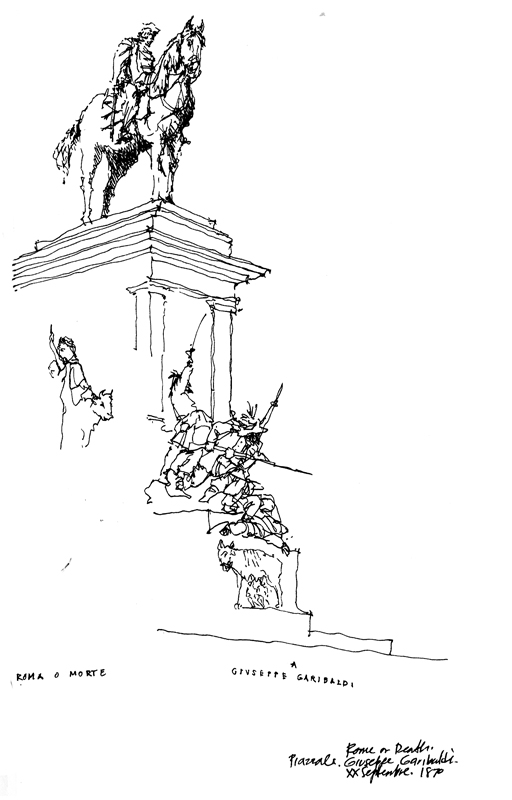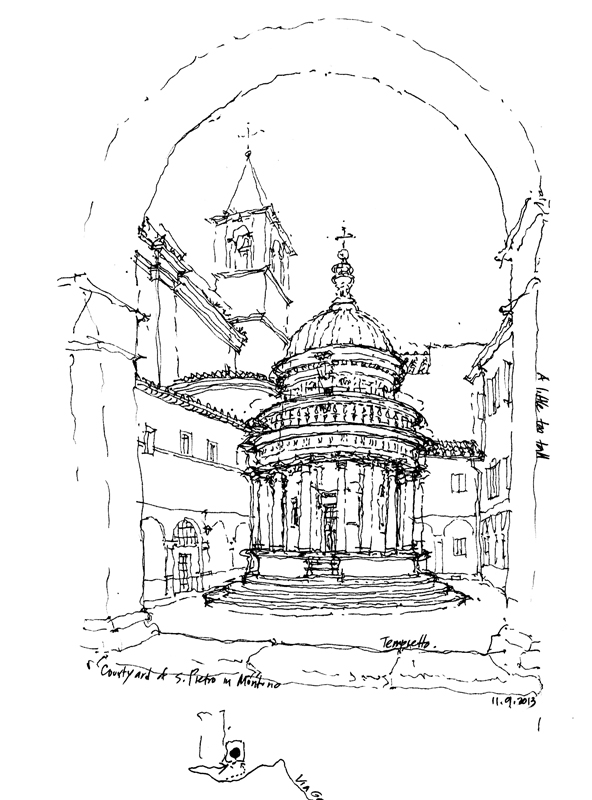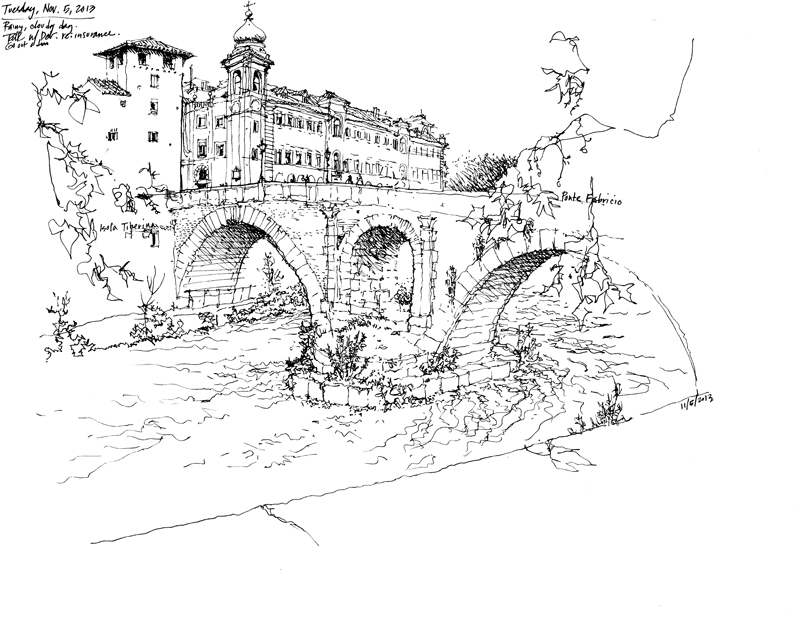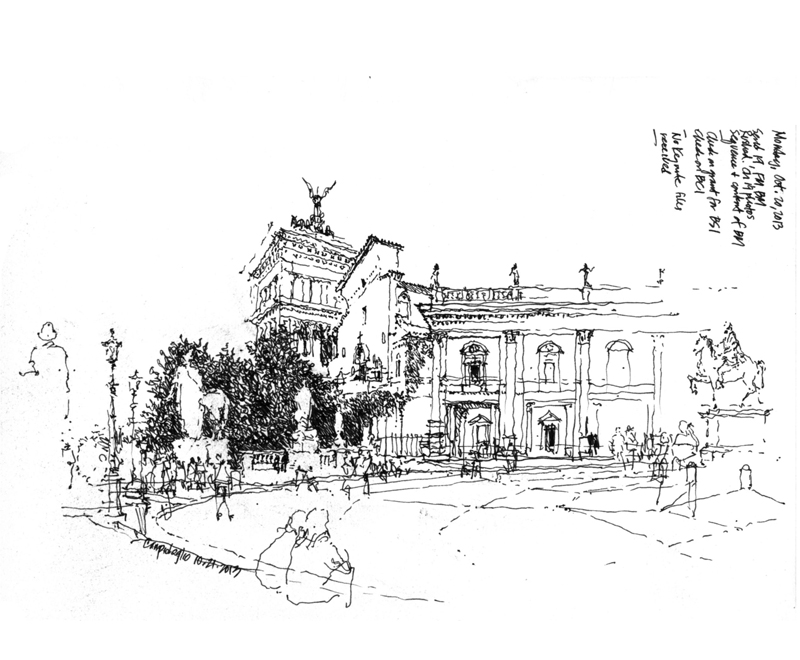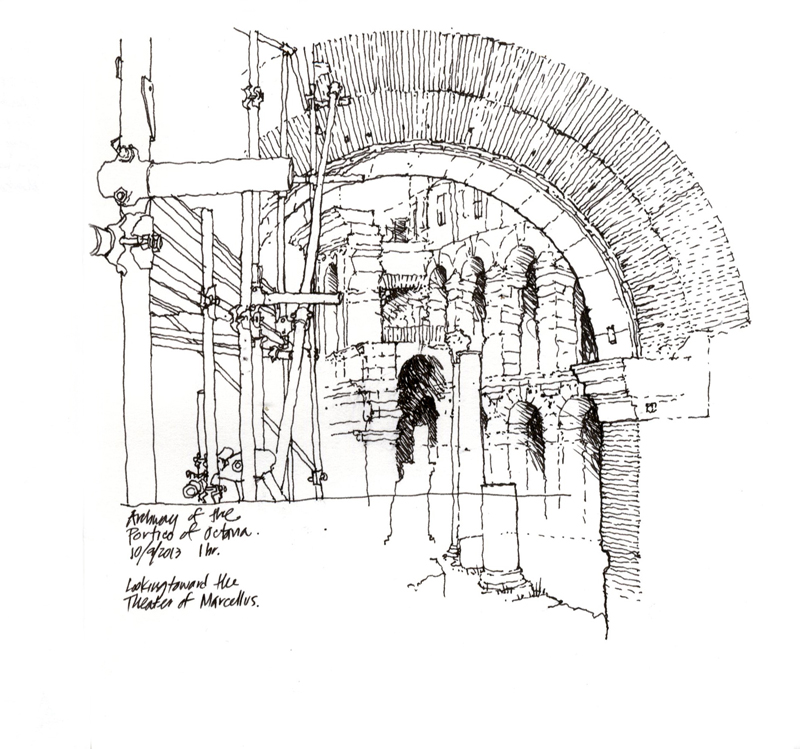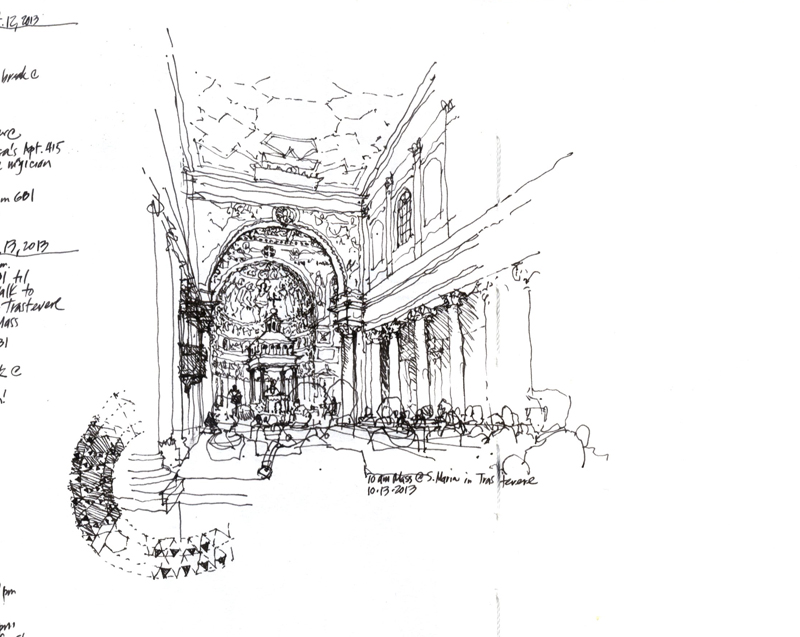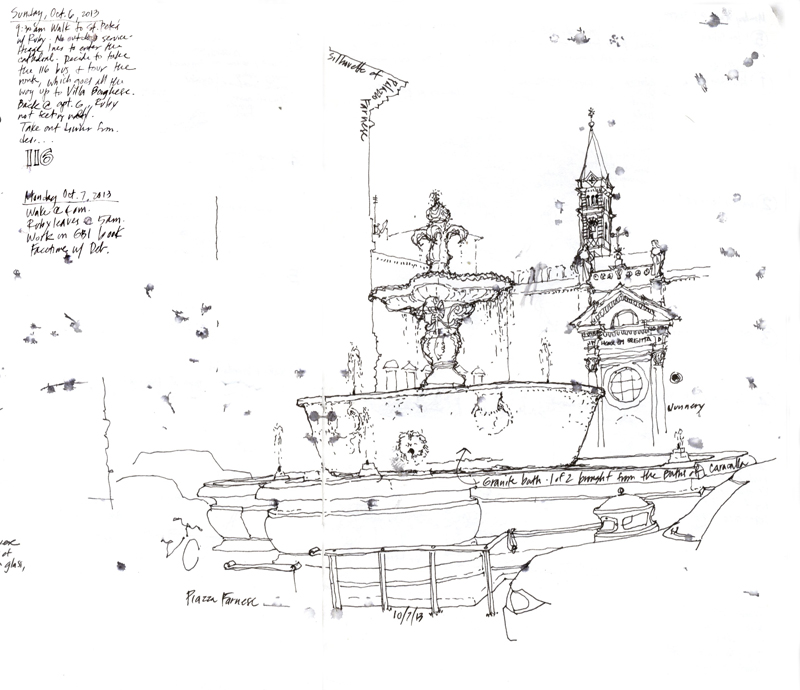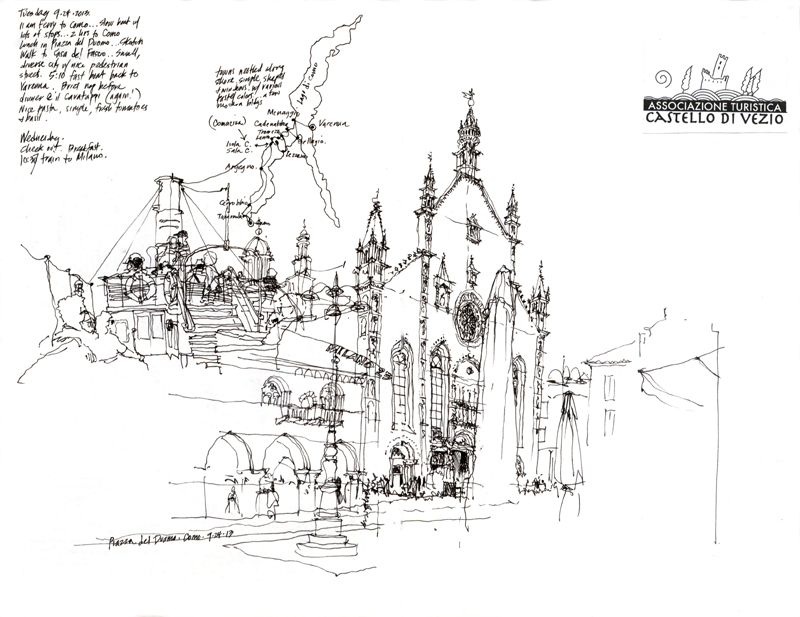During our field trip south to Pompeii and Amalfi, we had the opportunity to visit Matera through the generosity of the Unione Italiana Disegno, who invited me and the entire UW group to their conference that was being held there.
While in Matera, we had a tour of the Sassi, a dense network of dwellings carved out of the local tufo stone and interwoven with stone alleys and stairways. Even though many of the original rock-cut spaces are hidden behind the facades and walls built from the stone removed to create the underground dwellings, we were fortunate to get a glimpse inside one of the structures to see what the original cave spaces might have looked like. The upper drawing is looking from the Sasso Barisano to some of the caves across the glavine; filling the space below is a view of the Sasso itself.
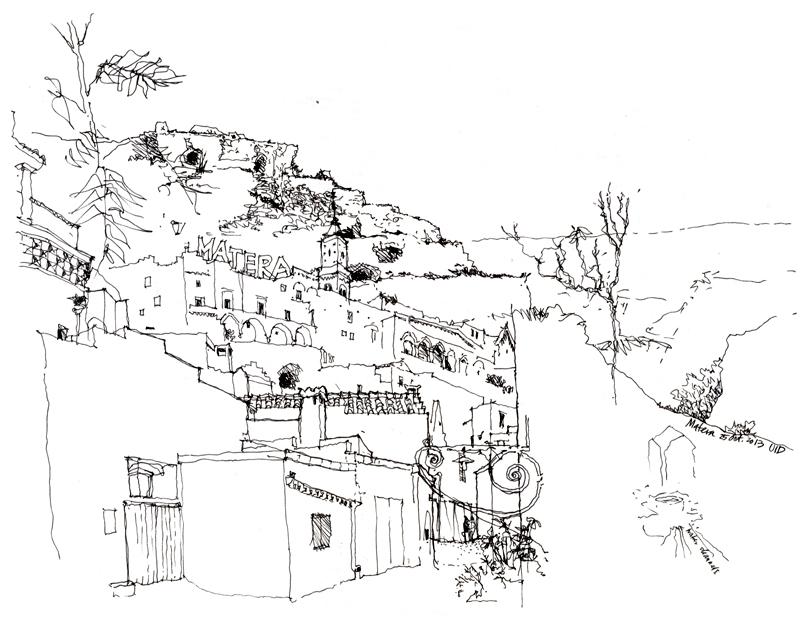
Quoting from the Comune di Matera’s website: “Looking at the structure of the Sassi we can clearly see the social and architectural evolution of mankind, from simple dugout shelters, to caves with facades, to the construction of roofs on which to create vegetable gardens; and the evolution of the social structure of a community – human interaction amongst individuals, families, dwellings, neighborhoods and churches, from rural to urban. In 1993 UNESCO declared the Sassi of Matera a world heritage site, describing it as “the most outstanding, intact example of a troglodyte settlement in the Mediterranean region, perfectly adapted to its terrain and ecosystem. The first inhabited zone dates from the Palaeolithic, while later settlements illustrate a number of significant stages in human history.”
Many thanks to Dr. Salvatore Barba of the University of Salerno and Francesco Ferraris for their gracious hospitality during our visit to Matera.

